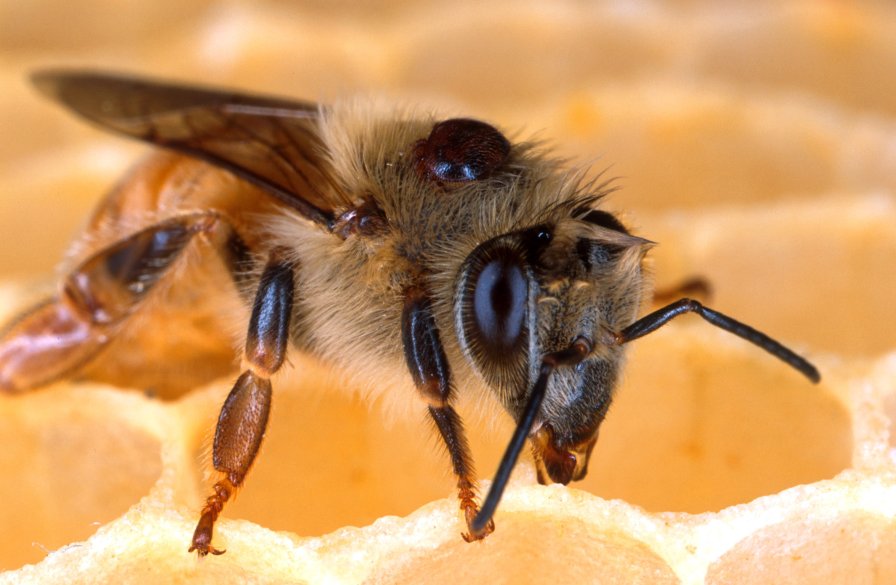Report: 90% of NY Beehives Had Varroa Mites in 2016

Varroa mites, like the one attached to the back of this honey bee, can decimate unprotected hives. The tiny parasites feed on the bees’ blood and can infect them with harmful viruses. (Photo credit: Scott Bauer, USDA-ARS)
Cornell University’s NYS Beekeeper Tech Team released a report showing that the state of the New York’s beekeepers are being overwhelmed by varroa mites in 2016. A full 90% of colonies sampled had the parasitic pests.
The sample group is estimated to represent a third of statewide honey production, or 19,000 colonies, which produced 1.2 million pounds of honey, the researchers say.
“Varroa mites are extremely common in NY and were not well controlled in fall 2016,” the report states. “Ninety percent of colonies sampled had mites, and 78% of operations had one or more colonies that exceeded the economic threshold for Varroa.”
The economic threshold is when an insect’s population level and/or the extent of crop damage at which the value of the crop — in this case, honey production — destroyed exceeds the cost of controlling the pest.
The study also tested 208 colonies for the presence of viruses, and all of them had at least one virus. Considering the high number of colonies containing varroa mites, it’s not surprising that Deformed Wing Virus (DWV), which is linked to the mites, was found in 96% of the colonies.
One disturbing find is that only 36% of beekeepers monitored for varroa mites in a “quantitative method” in 2016.
When it comes to how beekeepers treat their hives for mites, 57% used natural chemicals like thymol, formic acid, or oxalic acid. Only 5% used synthetic chemicals, while 27% did not apply any chemical treatment, including natural chemicals.
Those who found the most success in pushing back varroa mite levels going into winter were those who combined natural and synthetic treatments, a group that represent the remaining 11% of beekeepers. The 11% were the only group that did not exceed the economic threshold of 3 mites per 100 bees.
Researchers did not indicate if the mix of treatments or the fact that these keepers applied treatments much more often (five times a year, compared to two times) lead to the increased effectiveness.









